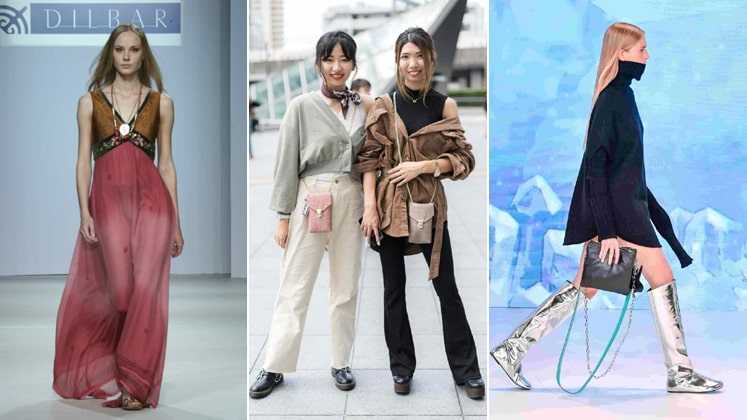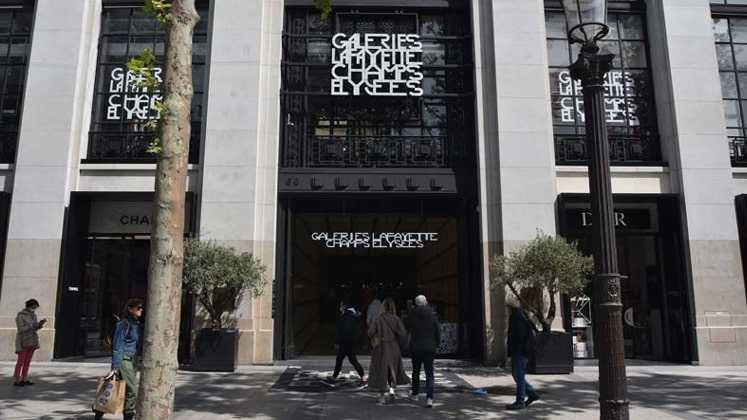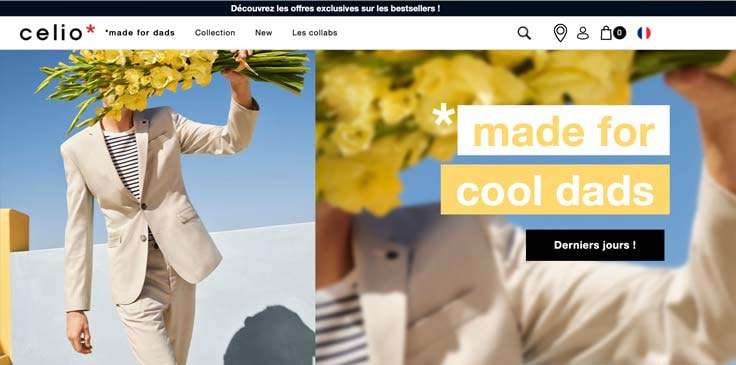
In continuation to the previous report on the fashion industry’s resilience worldwide as international markets reopen , we now draw focus upon the markets of France, Japan, Russia and Brazil – on how they plan to secure a more sustainable future.
COVID-19 has accelerated shifts in attitudes with consumers paying more attention than ever to the safety, quality, and sustainability of materials used in fashion and accessories, and the risks associated with local and global supply chains.
Presented by Intertek’s Maison Centre of Excellence for Luxury on behalf of Intertek Group plc, a total quality assurance provider to industries worldwide, the report brings together the fashion trade industry’s most influential commentators to discuss major trends set to re-shape the fashion sector in a post-pandemic world.
Business: E-commerce gained
The lockdown validated the shift to omnichannel business
The period from 17 March to 11 May saw a 2-month sabbatical for stores. In April, the IFM Economic Observatory estimated that in-store sales of apparel and textile products had collapsed by 74.6 per cent. On a brighter note, though, sales on the internet saw a spike of 22 per cent as compared to 2019. The lockdown clearly validated the shift to omnichannel business models for players across the spectrum.

Big international e-commerce players like Amazon (even if strikes in France slowed its activity), Zalando or Farfetch as well as digital native, vertical brands with a strong community such as Sezane seem to have scored a lot. Retailers who invested in their digital platform before the pandemic, such as Celio in the mass market, The Kooples and Ba&Sh in the contemporary segment or Balenciaga in luxury also benefited multi-fold.
However, one month after the end of the lockdown in France, consumers are seen coming back to the stores. We don’t really see any ‘Revenge Shopping’, but brands and retailers are seeing growing traffic week after week.

In Paris, Galeries Lafayette and Printemps finally reopened their department stores on Boulevard Haussmann at the end of May. That has sent a really positive signal for all the brands selling on their floors, big and small, established and new alike.
Sustainability: A government concern
Is the supply chain ready for a big switch?
The French Government is on a mission to encourage reshoring and production in France. During the lockdown, many players in the French textile industry worked together to produce masks – which saw a great ‘Made in France’ moment, a momentum which the Government wants to continue to capitalise on.
This mission, led by Guillaume de Seynes, President of the Strategie Industry Committee (Comitéstratégique de filière mode et luxe) not only wants to investigate building production in France but also to create new models for French industry centred on eco-design, recycled materials, re-use and production on demand.
Meanwhile, during the lockdown, brand leaders also looked deeper into sustainability approaches not just through re-shoring opportunities, but also by trying to improve the role of eco-friendly materials within their lines.
So, we’ll probably see acceleration on this front, but there are also big grey areas – How can young designers and small eco-focused brands keep sourcing responsibly if they have to compete with fashion giants? Is the supply chain ready for a big switch? If consumers have less disposable income after the pandemic, will they still be concerned about eco; and, above all, will they be ready to pay the price for it?
Street & fashion: Kids come first
T-shirts and dresses lead the way
It is clear that the kids business has had a great rebound during May, when parents needed to update their children’s wardrobe for the summer.
During the lockdown, there has been a great appetite for loungewear, sweatshirts and leggings. As of now, dresses and T-shirts are the most sought-after products as consumers rush to enjoy the summer outside.
Overall, however, it’s hard to identify clear-cut trends. Some brands bet on colourful products, but most of the players say that they won’t take too many risks in their collections for the next few seasons.
One thing is for certain: brands and designers who have been proactive in communicating with their community during the lockdown are in a better position to grow again. After months of non-commercially focused communication via newsletter and social networks, they are now able to come back to their clients with offers and invite them back into their stores without sounding ruthlessly commercial.
Contributor: Olivier Guyot
Business: Mixed results
Cancelled orders because of the slump in the domestic retail market
We can say that the Japanese retail model of SPA (Speciality Store Retailer of Private Label Apparel Manufacturing) is performing quite well in the fashion field.
One of the representatives of these cases is Fast Retailing Co. Ltd., owner of Uniqlo etc., which has 3,648 stores around the world (as of end of February 2020).
Uniqlo’s sales in April 2020 (the most difficult Covid-19 month in Japan) decreased by 56.5 per cent, as compared to the same period in the previous year. However, business at other specialty store chains and department stores decreased by 60-90 per cent.
This goes on to say that one of the reasons for Uniqlo’s relative success is because they adapted the concept of ‘Life Wear’ (clothes associated with daily life) into staple fashion items with high functionality. It’s also because consumers appreciate their manifesto to constantly improve and innovate.
On the other hand, the Japanese textile industry is in a serious condition due to cancelled orders and because of the slump in the domestic retail market from March to May. This slump was created owing to apparel companies and retailers having too much stock of Spring/Summer 2020 items that they could not make plans for Autumn/Winter 2020/21, thus delaying textile orders.
However, some textile manufacturers, who are strong in exports, say that the decline is less than expected and the impact is small.
Street & fashion: Looking for connections
‘Twin Coordination’ is the pervasive trend amongst girls around 20-years-old
There is a growing trend of a style called ‘Twin Coordination’ in Japan, which is the pervasive trend amongst girls around the age of 20.
Instead of looking to celebrities as ideal images of fashion, they relate to influencers and non-professional models chosen by magazine readers and in the current times, they are looking for empathy and friendship.
Along with this zone called ‘Young’ among elder women, there is also an independent woman ‘ Super-Adult ’ look that originated with Phoebe Philo when she was the Creative Director of Celine.This look has continued gaining popularity for the past year, even after Phoebe resigned, and now they are looking for a new ‘Post-Phoebe’ story.
While these two major looks are strong, what seems to have declined is the market for late 20 to 30-years-olds – an area called ‘Red Letters’ (named after a type of fashion magazine). Their fashion has been driven by ‘Kawaii’ – chosen to attract men’s attention. This type of fashion, rather unique to Japan, has been popular for a long time having evolved with multiple changes; in fact, these ‘Icon Women’ still exist as TV announcers, etc.
But its current decline comes as this age group of ‘Icon Women’ shifts its attention from their clothes to body-awareness and well-being in the kind of water they drink and the kind of exercises they do.
For example, because of the need to have a ‘bust like hers’, the night bra, worn in bed while sleeping, is now a popular item. It has become a part of the ‘Stay Home’ culture that came with Covid-19, and products in this category are selling well on e-commerce. This situation is expected to perform well for some time.
Sustainability: Greater interest
Sales in fields such as fair-trade products and organic material products are increasing
Interest in sustainability issues is widely increasing. However, due to the ambiguity of its definition, it is not possible to give statistical data. Nevertheless, there is no doubt that sales in fields such as fair-trade products and organic material products have seen a huge spike.
For example, the main textile products of MUJI, a representative of lifestyle SPA, with 1,000 stores in Japan and overseas and a more than ¥430 billion turnover, are based on organic cotton, organic linen as well as various other sustainable materials such as recycled cotton and wool.
Products are also being pursued from the perspective of fair trade and worker safety. In the beginning, sales of sustainable products were slow. Many consumers, even if they wanted, did not buy items either because they were not clearly explained and identified or were often buried away in retail stores under other merchandise.
But, thanks to the greater online shopping experience gained during the Covid-19 epidemic, more and more consumers now understand how easy it is to find detailed information about such products.
In turn, more brands are catching on to the importance of sustainability issues and including the same within their assortments – even if it is just a start.
However, there are/could be problems. Because of the economic downturn caused by the pandemic, buyers, even those strongly in favour of responsibly made products, could be forced back into low price, budget-oriented merchandise.
Contributor: Sumiko Wakasa
Lack of savings
Clothing was a low priority during quarantine
According to a number of case studies, more than 60 per cent of Russians do not have monetary savings. Therefore, it seems unlikely that consumers will be splashing out.
PROfashion conducted a survey among consumers wherein many of them were of the opinion that there is no need for clothing during quarantine. In April, clothing sales in Russia fell by an alarming 90 per cent.
Street & fashion: Looking for discounts
Today, consumers are primarily interested in the price
According to a survey conducted by Maksim Medvedev, online sales during the quarantine period, show that Russian consumers bought children’s clothes, home clothes, clothes for sports and yoga.
The decisive argument in favour of buying casual clothes was the availability of good discounts. Due to the collapse of the rubble and a vague future, some consumers decided to stock up on things for the future and bought clothes and shoes from European brands at great discounts.
In late May and early June, offline stores began to open up in Russia. As per the boutique owners, there are very few customers, and sales compared to the pre-crisis period have decreased by no less than 80 per cent.
Some of the respondents of this survey said that they are buying products of small local brands or private craftsmen, or plan to do this when there is a financial opportunity. The problem is that niche brands are not always able to respond to the needs of a wide range of consumers.
More often than not, local brands offer a small assortment and size range. In addition, today consumers are primarily interested in the price – if the price of clothes suits the client, then he/she does not care where the clothes are made.
Sustainability: Cleaning out their cupboards
Rental clothing will become a necessity
In quarantine, people took time to look at and sort out their wardrobes, trying to understand what they really needed.
Clothing rental services are currently forecasting a big future, because the economic crisis has strongly distorted purchasing power. However, it should be remembered that consumers choosing rental is not the result of desire, informed consumption and sustainability, but an economic necessity.
For the same reason, Russians will travel less. They want to visit other countries, but at the moment many do not have money for this.
Contributor: Maksim Medvedev
Solidarity first
A new way of doing things
The numbers leave no doubt about the seriousness of the Brazilian economic situation due to the Covid-19 pandemic, even though the Government tries to mask the crisis.
The Brazilian Association of the Textile and Clothing Industry (Abit), reflecting the apprehension of its members and the risk of collapse of production systems, has voiced its concern. It should be remembered that the textile and clothing sectors here employ 1.5 million people directly and a massive total of 8 million indirectly!
The Brazilian industry is feeling a sense of vulnerability but is using technology to organize information and the entire social protection network to face the virus.
The way out of this crisis is closely linked to Government actions, and also to the private sector within its own powers and possibilities – Solidarity is a keyword! The virus has impacted consumer behaviour in a way that a move to conscious consumption is emerging with basic necessities prioritised.
Consumers are also becoming increasingly adept with e-commerce, further pressurising physical retail, which will have to emerge onto the post-pandemic scenario with a more imaginative strategy for reaching out to consumers and their new needs.
Meanwhile, entrepreneurs are looking for alternatives amongst local suppliers to replace demand hitherto met by imports. 2021 is being discussed as the year of recovery and 2022 as that of effective growth.
To achieve that, the Brazilian textile chain will have to change; that is,faster processing, decrease in inventories, and more sustainable machinery will be required.
Street & fashion: Intertwining!
Doing it a better way
It is true that major crises are seen as important turning points in society, as they bring to light new realities not recognised before.
Looking at the environment, social movement, humanising, connecting and ‘intertwining’ are the new challenges for brands and several Brazilian designers see the presence of love, spirituality, collectivity, cooperation, and ‘doing it in a better way’ as instruments of creativity for their collections.
We see a more demanding and digitally aware consumer coming. Brands that know how to be collaborative at this time of crisis will have a special place in the minds and hearts of consumers. Those who know how to connect with the new needs of people will be reborn and survive.
Big Brazilian brands are very focused on issues like seasonality and collection size and are thinking about abandoning the traditional fashion calendar by going ‘ seasonless’ .
Other professionals believe that with the slowdown of the pandemic, people, in search of the joy of living, will want to shop, party, be entertained and dress in colours and festive clothing.
After all, “The show must go on”!
Sustainability: Firm steps towards sustainability
Growing interest in the purchase of sustainable, vintage clothing
The Brazilian industry is already taking firm steps towards sustainability and this bodes well for brands and consumers.
Consumer interest in sustainable fashion has increased dramatically and is reflected in their growing interest in sustainable, vintage clothing and the use of clothing rental services. They care about waste, and the origin and disposal of materials.
Designers have sought to insert sustainability into fashion by investing in the search for new materials and in the reuse of fabrics, supported by recycling and organic- based industries. The pandemic has spurred brands and entrepreneurs to investigate many changes. Large retailers and brands are now looking for more efficient and responsible supply chains as they come to understand that consumers are demanding a more direct and closer relationship with labels as they grow more concerned about sustainability, waste reduction and the circular economy.
Contributor: Carlos Simoes

Post a Comment